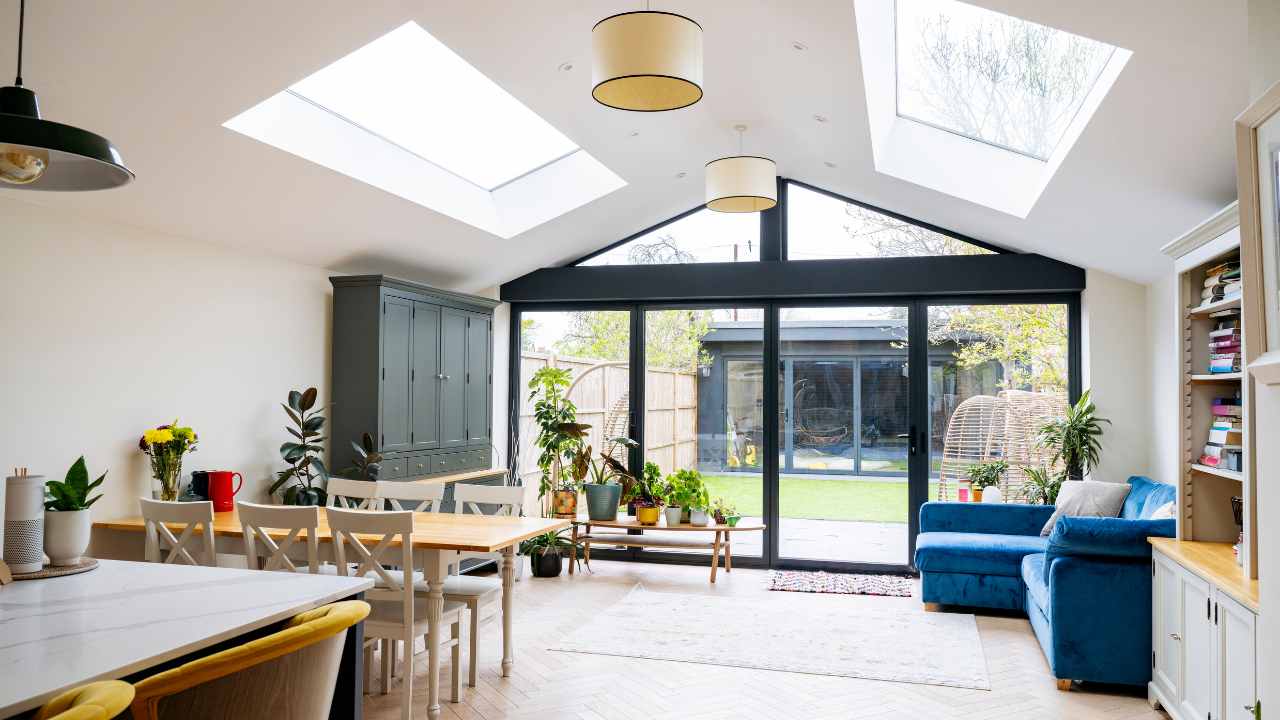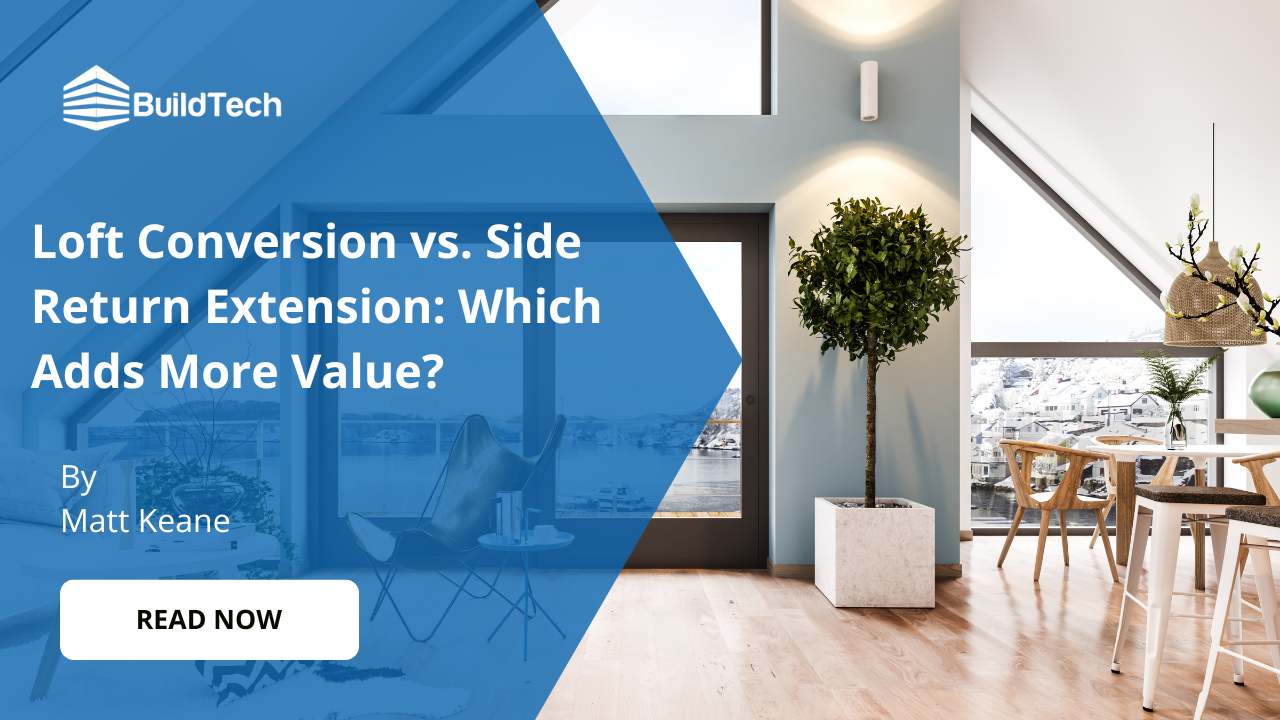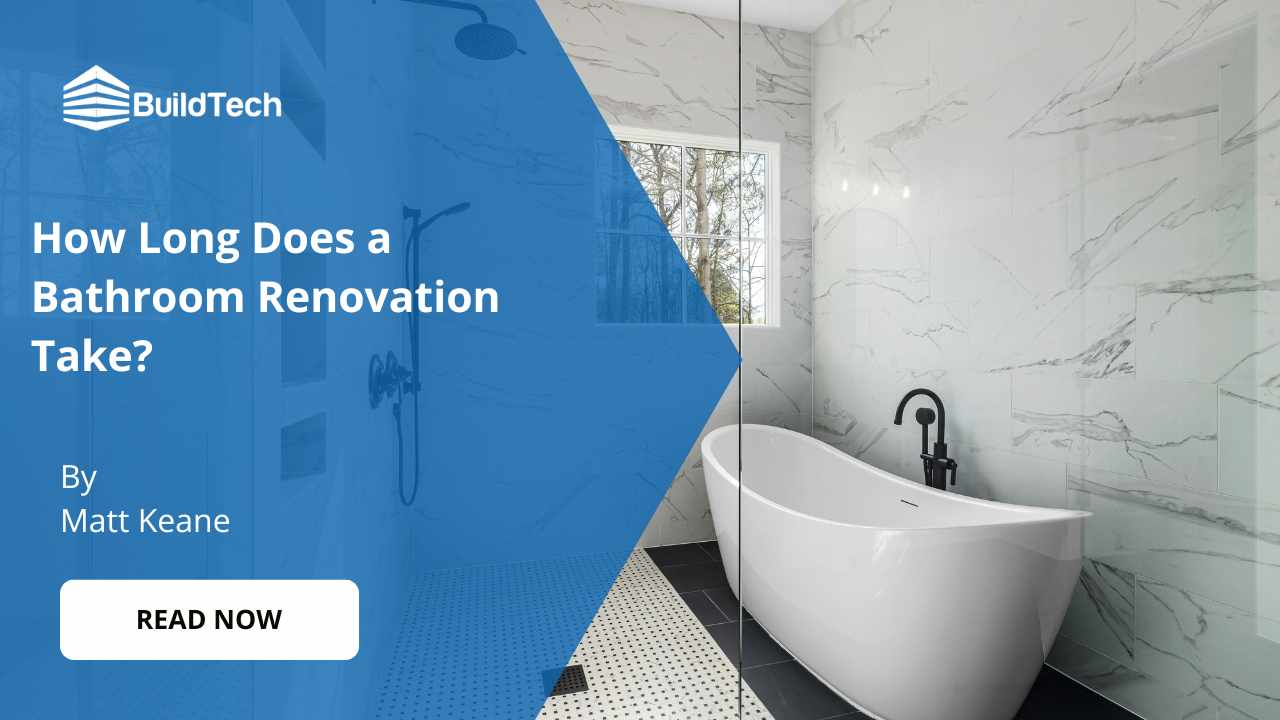Are you considering expanding your home but unsure whether a loft conversion or a side return extension will add more value? Both options are popular among homeowners in Ireland looking to increase space and improve property value.
A loft conversion can provide an extra bedroom, office, or playroom, while a side return extension transforms narrow, underused spaces into bright, open-plan living areas. Each has unique benefits and potential financial returns.
In this blog, we’ll explore Loft Conversion vs. Side Return Extension: Which Adds More Value?, compare their advantages and planning requirements, and help you decide which is right for your home.
What is a Loft Conversion?
A loft conversion is the process of changing an unused attic into a practical living space, often without changing the footprint of the home. This could mean adding a bedroom, home office, or even a master suite, depending on your needs.
Popular in both urban and suburban areas of Ireland, loft conversions are cost-effective and typically require less disruption than extensions. By using existing space, they provide great value while giving homeowners flexibility to adapt the design to their lifestyle.
What is a Side Return Extension?
A side return extension involves extending into the narrow strip of land that runs alongside many period homes, particularly Victorian and Edwardian terraces in Ireland. This area is often underused, yet by adding it into the main house, you can create a wider kitchen, open-plan dining space, or family room.

Side return extensions are especially appealing for homeowners wanting to modernise layouts, increase natural light, and add social living space. Though they require planning permission, the lifestyle benefits are significant.
Loft Conversion vs. Side Return Extension: Which Adds More Value?
Choosing between a loft conversion and a side return extension can be challenging for homeowners. Both add space and increase property value, but the type of improvement you choose depends on your goals, lifestyle, and property style.
Property Value Impact
A loft conversion often increases a property’s value by adding an additional bedroom or even a bathroom. Buyers are naturally drawn to homes with more bedrooms, as they meet the needs of growing families and increase overall functionality. This type of upgrade often helps a property stand out in competitive housing markets where space is in high demand.
In contrast, a side return extension may not add as many bedrooms but significantly improves the flow of living space. The open-plan layouts it creates are highly desirable in modern homes, making them attractive to buyers who value style and lifestyle. Over time, these lifestyle-driven changes can still provide excellent returns, especially in urban areas where living space is in high demand.
Investment and Work Involved
Loft conversions usually involve adapting existing roof space, which means less disruption to the ground floor and surrounding structure. The work is often quicker to complete and more contained within the top of the property. For many homeowners, this means they can continue living in the house during construction with minimal inconvenience.
By comparison, side return extensions require extending the footprint of the house. This means structural changes to walls, foundations, and utilities, which often involve a longer and more intensive building process. As a result, they may need greater planning and preparation, often requiring families to adjust their living arrangements while work is underway.
Lifestyle Benefits
Loft conversions are perfect for creating private and functional spaces, such as extra bedrooms, home offices, or playrooms. They are especially valuable for families looking to expand without sacrificing outdoor garden space. This additional room can also serve flexible purposes, adapting to changing needs over time, such as a guest suite or teenager’s bedroom.
On the other hand, side return extensions enhance daily living by transforming kitchens and dining areas into open-plan spaces. These designs improve natural light, social interaction, and the overall feel of the ground floor. Many homeowners also see this as an opportunity to redesign their kitchens into modern, stylish hubs for family gatherings and entertaining.
Planning Permission

Many loft conversions fall under permitted development rules, so homeowners may not need full planning permission unless the roofline is significantly changed. This makes them easier to pursue in many cases. However, building regulations still apply, and meeting structural safety requirements is essential for approval.
Side return extensions, in contrast, often require formal planning permission. Because they expand the home’s footprint and can affect neighbouring properties, approval is usually needed before building begins. This process can take more time, but with professional guidance, most applications are successful and lead to highly rewarding results.
Return on Investment
Loft conversions typically offer a strong return on investment because they add bedrooms, which are highly valued by buyers. Homes with more bedrooms often command higher asking prices on the property market. In many cases, this return makes a loft conversion one of the most financially rewarding home improvements available.
Side return extensions provide a different kind of return, focusing on lifestyle and usability. While they may add slightly less financial value, they make homes far more appealing to buyers seeking bright, spacious, and modern layouts. This balance between comfort and style often pays off when it’s time to sell, as open-plan designs remain in high demand.
Conclusion
Deciding between a loft conversion and a side return extension ultimately depends on your goals, lifestyle, and property type. A loft conversion often adds more financial value through additional bedrooms and private spaces, while a side return extension enhances daily living with bright, open-plan designs. Both options can significantly improve your home’s appeal and functionality, offering strong returns when done professionally.
At BuildTech, we specialise in designing and delivering both loft conversions and side return extensions across Ireland. Contact us today to discuss your project and let our experts help you decide which option will add the most value to your home.


















